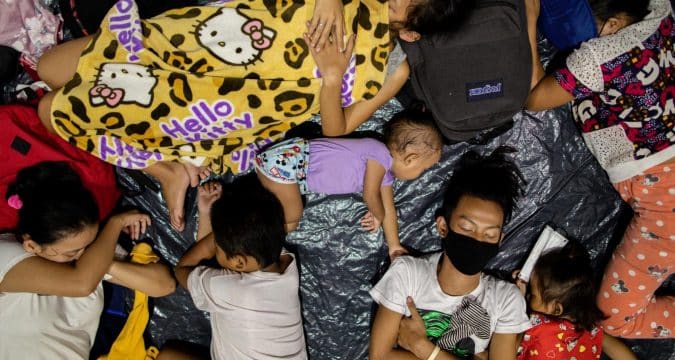
MANILA (Agencies): Super Typhoon Goni, said to be the most powerful typhoon this year, left at least 20 people dead in Philippines, but the toll could rise as aid workers reach remote coastal areas, CNS reported.
Goni, known in Philippines as Rolly, also destroyed at least 130,000 homes as it made landfall with sustained winds of 224 kilometres per hour and gusts up to 278 kilometres per hour on October 31 and November 1.
Karen Janes, head of programming in the Philippines for United States-based Catholic Relief Services, part of Caritas Internationalis, said: “There are parts of Catanduanes and Albay (provinces) that have been completely destroyed by the typhoon. Three towns have been 50 to 90 per cent wiped out. Thankfully, people were warned of Typhoon Goni early and were able to get to the evacuation centres.”
Janes said Caritas had received government permission to travel to the affected areas, which they expected to reach by November 3.
“Families are in desperate need of food, water and emergency shelter. In one town, 180 families lost their homes because of the intense mudflow from the volcano. It carried huge boulders into the nearby towns and buried homes and other infrastructure,” CNS repoted Janes as saying.
According to UCAN, the head of Caritas Philippines, Bishop Jose Colin Bagaforo, said it had been coordinating with local Caritas offices to distribute relief goods.
She added that Covid-19 travel restrictions were hampering normal emergency protocols, but added, “Our local partners have been trained on how to handle these kinds of emergency situations, and they supported local evacuation efforts.”
According the UCAN, the head of Caritas Philippines, Bishop Jose Colin Bagaforo, said it had been coordinating with local Caritas offices to distribute relief goods.
The bishop said they were in touch with social action centres in typhoon-hit dioceses to ensure fast and efficient distribution of relief goods to victims.
“Caritas is also ready to send financial assistance if and when needed by dioceses damaged by this (typhoon),” Bishop Bagaforo said.
Church officials had been bracing for the typhoon as it increased in strength.
As we celebrate the 500 years of Christianity in the Philippines. The Chaplaincy to Filipino Migrants organises an on-line talk every Tuesday at 9.00pm. You can join us at:
https://www.Facebook.com/CFM-Gifted-to-give-101039001847033
CBCP News tweeted photos from Sorsogon City, where pews at the diocesan shrine had been rearranged in squares to accommodate evacuees, who also faced the need for social distancing because of Covid-19.
Some of the victims were buried alive by mudslides around Mayon volcano, in the province of Albay, UCAN reported.
“At least seven were killed in our province. Two of them, a five-year-old and his father, drowned while several others were swept away by volcanic mud,” provincial governor, Al Francis Bichara, said.
He said the mudslides also buried homes and damaged bridges and roads near the towns of Daraga and Santo Domingo. Many people were also left without power in the province. “(Albay) was battered,” Bichara added.
Father Treb Futol of the Diocese of Sorsogon, said his parish had set up a soup kitchen and was feeding evacuees who fled their homes when they would normally have been marking All Saints’ Day, UCAN reported.
Meanwhile, Father Ranhilio Aquino of the Diocese of Tuguegarao, in northern Luzon, appealed for help for those affected by the typhoon.
Tristan John Cabrera, regional reporter for Unbound in the Philippines, also spoke of complications because the typhoon hit during the pandemic.
More than a thousand families served by Unbound, an international nonprofit founded by lay Catholics, fled to evacuation centres, CNS reported.
“We (Filipinos) have always been resilient after every calamity,” Cabrera said. “But honestly speaking, it is much harder right now that we are facing this strong typhoon while keeping ourselves healthy against the pandemic.”
In November 2013, Typhoon Haiyan hit the central Philippines, leaving more than 7,300 dead or missing and displacing more than five million people.



